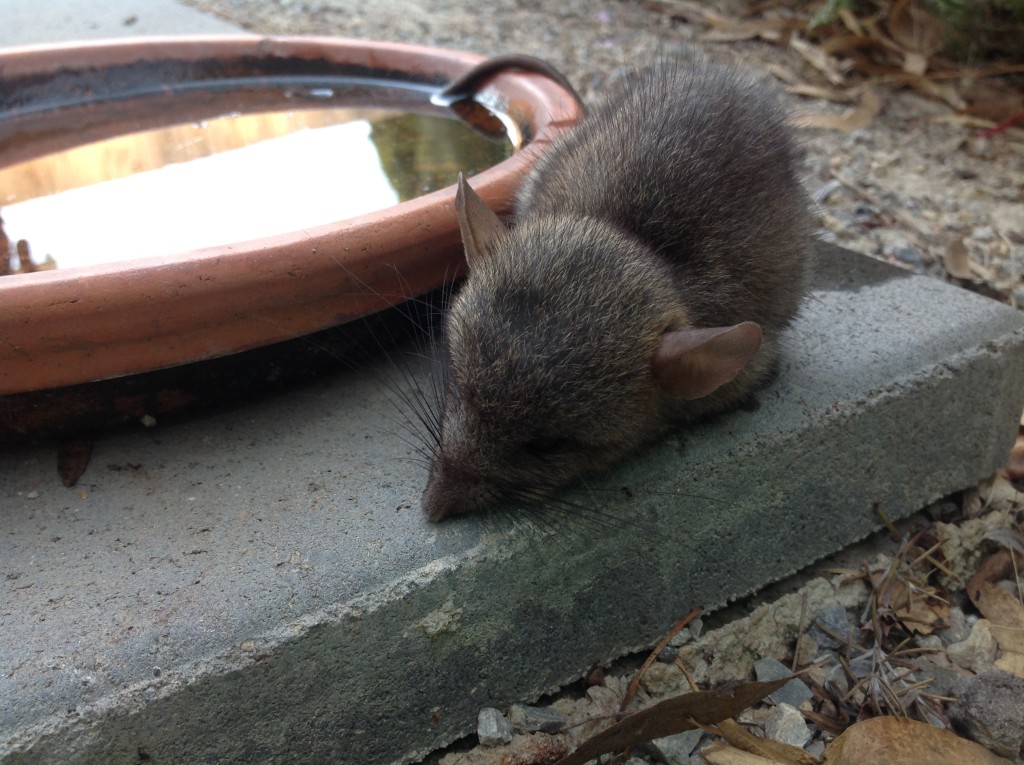Our courtyard borders a revegetated bluestone quarry, Cruikshank park. It’s with some sadness I have to report the death here of a native bush rat. Given its proximity to the water we suspect it may have been poisoned. I understand most popular rat poisons dehydrate the small creatures and drive them to seek water at all costs. This beast was in the open, vulnerable to inspection by a small dog and for a nocturnal creature, awake at the wrong time.
We could tell immediately it was a bush rat by the round ears. Although the long tail does give the impression of being rattus rattus, imported from Europe, and the scourge of human habitation around the world, this animal is closer to a possum. When you look at that adorable little face …
What is amazing about the presence of the creature is that they are not normally found in urban areas and we live 7 km from the city centre. So the revegetation is working. Up to a point, of course, for whoever bought the poison to knock out the population of rats they thought were dirtying up their precious lifestyle, couldn’t have been aware they were actually being visited by someone all too rare in our city life.
Had a fun chat with Leisa at Ratsak. I uploaded the above pictures and she agreed bush rats were lovely and ate insects. So, perhaps if you live near a park or reveg site consider the rats you are about to kill, in a painful and tortuous way, might be shy, nocturnal native creatures contributing to our environment by pollinating flowers and nibbling on insects. Our bush rats are probably not to blame for scuttling in the roof, climbing vines or stealing food from your cupboards.
A study at the University of Sydney is trying to see if by building the community of bush rats in an area they can keep the black rat numbers down, as competition between the two species is pretty even. So long as their playing field is level to start with!
http://www.abc.net.au/catalyst/stories/2981267.htm


